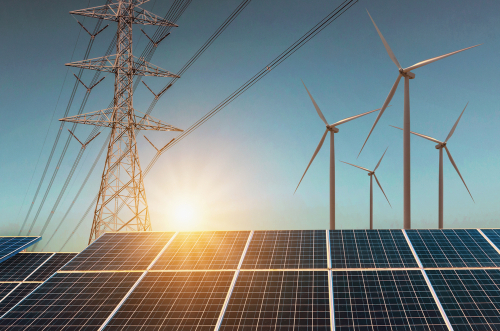Energy secretary tells NARUC summit renewable energy has become a national security issue

Russia’s use of energy as a weapon after means of tormenting neighboring Ukraine has also presented an opportunity for the United States to develop renewable power, Secretary of Energy Jennifer Granholm said Monday at the National Association of Regulatory Utility Commissioners (NARUC) Winter Policy Summit.
The disruption of Russian natural gas flows to Western Europe at the same time the effects of global climate change are increasingly being felt has given a new sense of urgency about deploying the variety of technologies being developed in the United States, Granholm told the approximately 1,600 regulators and other attendees at the conference taking place this week in Washington, D.C.
“The Russian invasion of Ukraine has really caused a geopolitical shift around energy resources,” Granholm said, noting that the Ukraine war breaking out at the same time that extreme weather appeared to be on the rise was accelerating the deployment of renewable power generation and transmission technology in Europe and on this side of the pond as well.
“This is now a question of national security for them,” said Granholm. “They have to develop their own resources on their own soil, and renewable energy is the best way to do that.”
“All of that shifting landscape is also happening to you all here in the states, territories and tribal lands,” she said. “It all points to what the 21st Century grid should look like and what are the best practices. It is no longer just a climate solution; it’s a national security solution.”
The turmoil overseas, however, has also created something of a vacuum allowing the United States to regroup and reduce its reliance on overseas suppliers and increase the role of U.S. manufacturers in boosting renewables production. It also is an opportunity to raise the resilience and reliability of a power grid that will need to be pumped up to handle the anticipated boom in electricity demand as the U.S. economy is drastically decarbonized in the coming years.
“How do you get all of this clean energy on this big ol’ grid, which right now isn’t big enough, by 2035?” Granholm said.
The Secretary’s remarks coincided with the announcement earlier in the day that the Biden administration was launching a package of initiatives and tax credits to beef up the nation’s energy supply chain and also increase the supply of renewables in low-income communities. The three initiatives include:
- $350 million for small- and medium-sized manufacturers to produce or recycle advanced energy materials
- Another $4 billion in credits to expand manufacturing of clean-energy equipment and reductions in manufacturing emissions; $1.6 billion of the total was earmarked for companies in coal-producing regions
- Credits were made available for new renewable generation on tribal lands or in low-income communities
The Biden administration has been beating the drum for a rapid expansion of renewable energy as a key driver of job creation in the United States and an opportunity to grab a leading role in the global supply chain. “This is an economic opportunity for America to build these products,” said Granholm, who said that the “reshoring” trend in manufacturing had resulted in plans for more than 80 new battery factories alone on the drawing board in the United States while new electric-vehicle charger projects had been approved in every one of the 50 states.
“We want to build the solar panels and wind turbines, and we want to bring back the battery manufacturing from Asia after we had sat on our hands,” Granholm said. “This whole clean energy industry is where the future is headed.”
